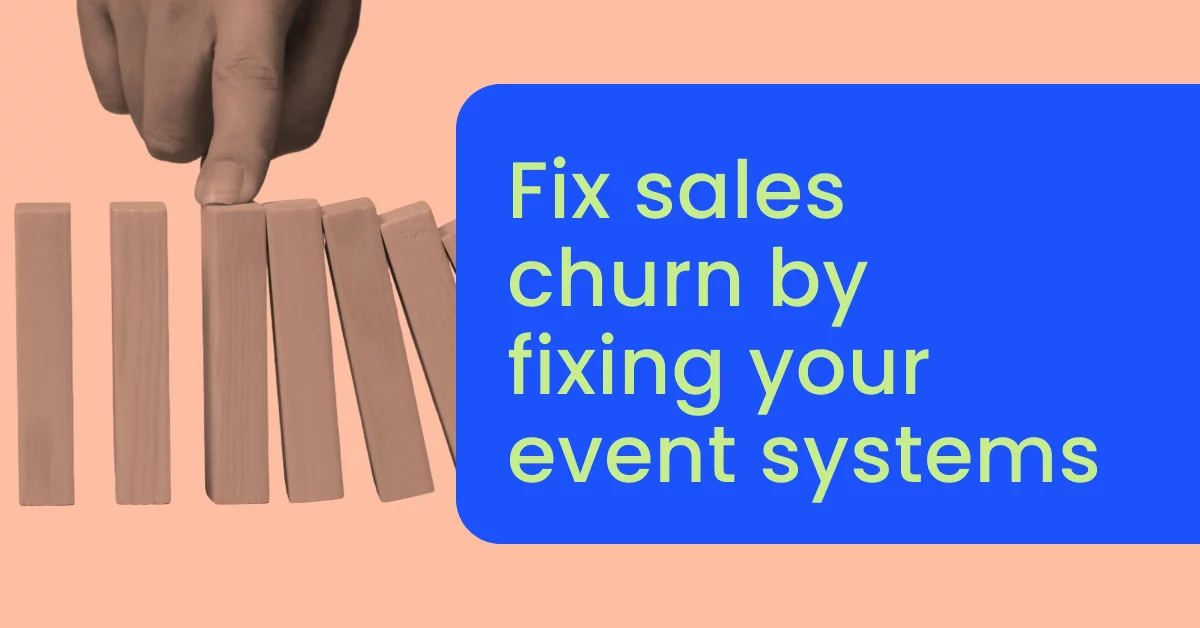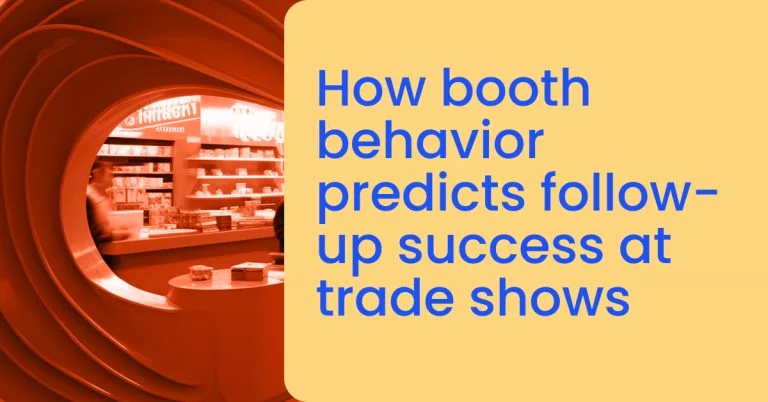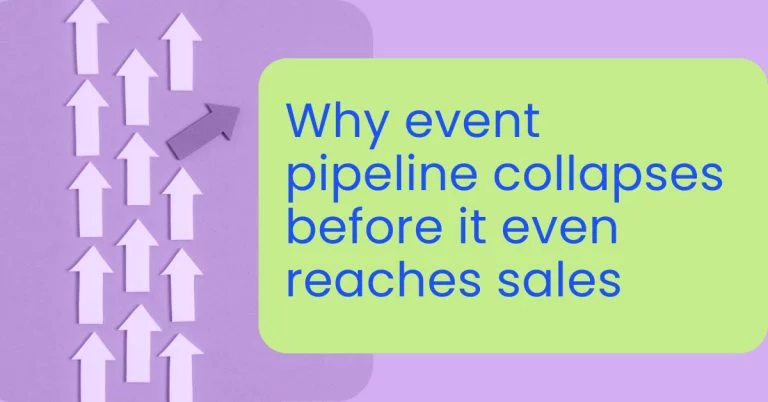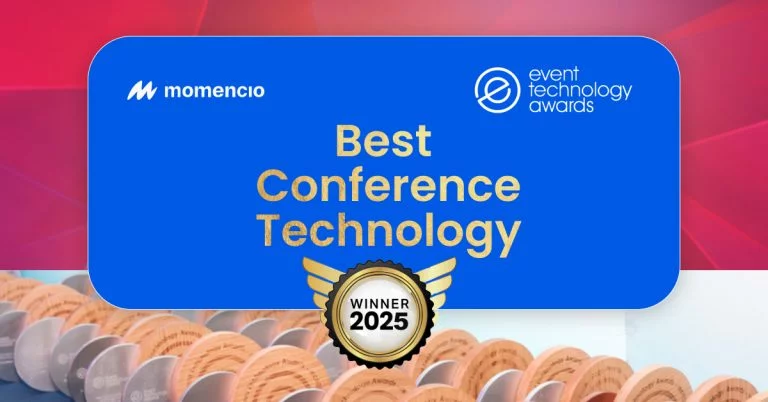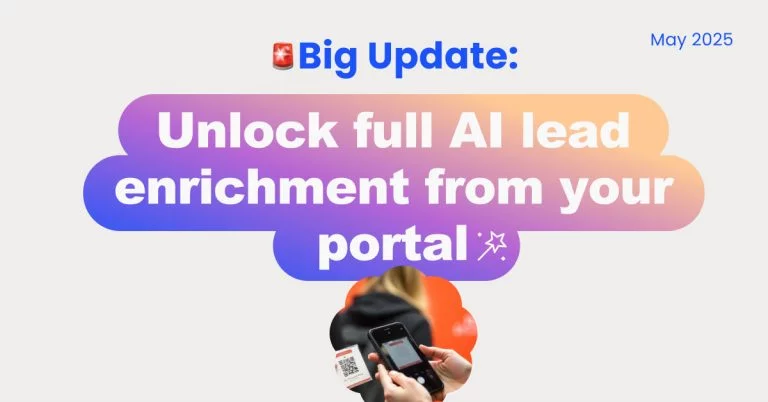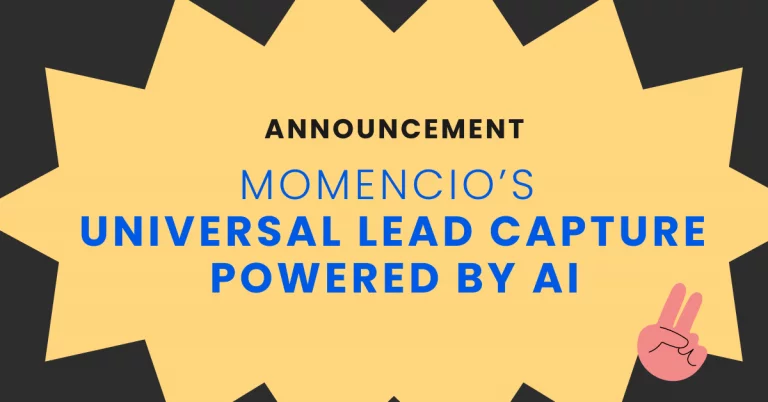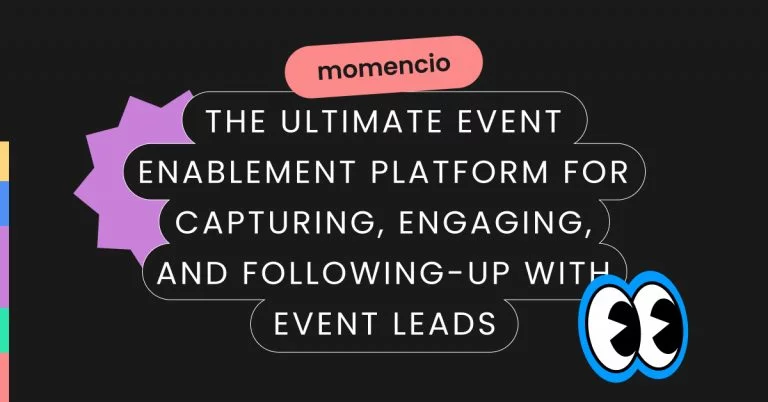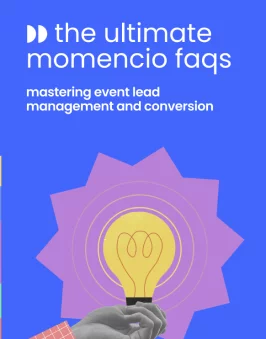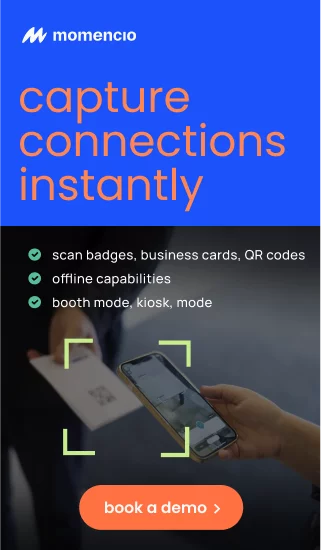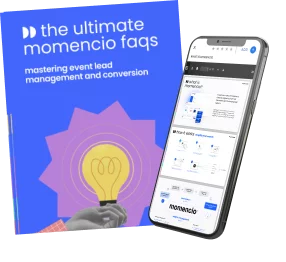The real reason salespeople quit event teams
There’s a reason event sales teams can’t hold on to talent and see higher sales churn. It’s not about people being lazy. It’s not about hiring the wrong profiles. And it’s definitely not because “salespeople don’t want to work anymore.”
The actual problem is simpler. Sales reps are quitting because they are being asked to win with a broken system.
Walk into any event sales environment and you see the same thing: teams flying out to conferences without real lead intelligence, spending hours chasing cold prospects, and wasting weeks after the event trying to figure out who was actually interested. They don’t have the tools to succeed. They don’t have visibility into what works. And they burn out fast because they’re stuck doing low-value tasks with no real payoff.
Every sales leader says they want high performers. But the truth is, even your best people will fail if the system they operate in is dysfunctional. You cannot build a high-output team on low-quality infrastructure.
This article explains why churn in event sales teams keeps rising, why the problem has nothing to do with talent, and how any company serious about pipeline growth can fix this by fixing their enablement systems first.
The failure cascade inside event sales teams
Every breakdown in event sales follow the same predictable pattern. It starts with flawed targets, builds into daily inefficiencies, and culminates in costly churn. Below is a breakdown of this failure chain:
Stage 1: Misaligned targets
Sales teams are tasked with maximizing lead volume, without access to the tools needed to assess lead quality. The starting assumption is flawed: all leads are equal. This triggers a cycle of activity over productivity.
Stage 2: Workflow friction
Because qualifying leads on the floor is impossible, sales reps default to mass scanning and minimal qualification. Post-event, they face data chaos. Time shifts from selling to sorting. Personalization is abandoned due to volume overload.
Stage 3: Performance frustration
High performers, who thrive in structured, merit-based environments, quickly recognize the futility. They realize their efforts are disconnected from outcomes. This frustration reduces discretionary effort and increases passive disengagement.
Stage 4: Leadership misdiagnosis
Management misreads the symptoms. Instead of diagnosing operational gaps, they conclude individual performance failure. This leads to pressure cycles — more targets, less support, heightened monitoring.
Final outcome: Accelerated attrition, compounding cost
The result is premature exits, destabilized teams, and a constant onboarding churn. Organizations pay twice — once through wasted payroll on low-ROI activities, and again through missed revenue opportunities from unconverted high-intent leads.
This isn’t isolated failure. This is a system operating exactly as designed — just delivering the wrong outcome.
What high-performing event sales teams do differently
The difference between a struggling event sales team and a high-performing one is not raw talent. It’s operational design. The systems they operate within determine productivity, retention, and revenue outcomes.
Below is a direct comparison between low-performing and high-performing environments:
| Category | Failing teams | High-performing teams |
| Pre-event preparation | Basic attendee lists, no intent data, zero pre-qualified targets | Verified attendee intelligence, account targeting, pre-event personalization |
| Lead capture approach | Volume-driven, indiscriminate scanning, no qualification | Targeted scanning with real-time enrichment and lead scoring |
| Sales rep workflow | Manual data entry, scattered notes, multiple tools with no integration | Centralized workflows with automated lead enrichment and content delivery |
| Post-event follow-up | Generic mass follow-ups, long delays, high bounce rates | Immediate personalized outreach based on live interaction data |
| Measurement of success | Lead count obsession, superficial activity tracking | Pipeline quality metrics, engagement scoring, and revenue attribution |
| Talent retention | High burnout, revolving door hiring | Higher retention, upward mobility of field reps, more pipeline per rep |
The operational design of high-performing teams removes friction, enables reps to sell instead of administer, and establishes feedback loops where effort translates into visible, trackable outcomes.
Organizations that invest in real-time lead intelligence, automated enrichment, and post-event behavioral tracking consistently report two compounding results: higher pipeline conversion rates and lower sales team attrition.
The conclusion is simple: when systems improve, people stay — and they win more often.
How to fix the system and stop sales churn
When organizations experience repeated sales attrition in event-driven teams, it is a signal of foundational process failure. This failure is typically invisible to leadership because it is embedded in legacy operational design — not individual effort.
To understand where correction is needed, we first map out the default architecture most companies operate within:
Legacy operating model: What breaks the sales engine
- Information asymmetry before the event. Reps lack account-level intelligence, entering events reactive rather than targeted.
- Volume-oriented capture processes. Lead acquisition is designed for throughput, with no filtration of buyer intent or qualification.
- Delayed personalization windows. Buyers receive generic outreach after interest decay has already set in.
- Fragmented feedback loops. Reps operate blind to post-event engagement, lowering effective follow-up timing and quality.
- Vanity metrics tied to performance reviews. Measurement systems prioritize lead count over revenue progression, misaligning incentives.
Each of these friction points compounds workforce dissatisfaction, leading to premature exits of capable salespeople and a productivity ceiling on those who remain.
Target operating model: System principles that reverse churn
A corrected architecture is built on five integrated systems principles:
- Predictive intelligence injection pre-event: sales teams deploy events not as generic hunting grounds but as precision targeting environments, using CRM enrichment, engagement signals, and predictive scoring to front-load high-fit account focus.
- In-line qualification mechanisms: lead scoring occurs at the point of capture, not post-event, eliminating resource drain on cold follow-ups and increasing high-intent prospect density within the pipeline.
- Zero-delay personalization deployment: personalized sales assets are sent within the live interaction cycle, capitalizing on peak interest moments and activating pipeline velocity earlier in the cycle.
- Closed-loop behavioral intelligence: post-event engagement is monitored continuously, creating high-fidelity signals that enable adaptive sales pursuit without blind guesswork.
- Value-aligned performance measurement: performance assessment shifts from quantity to velocity — measuring reps not on superficial lead generation, but on progression rates of qualified opportunities through the revenue pipeline.
In outcome terms, this systemic redesign transforms events from unpredictable lead generation gambles into highly controlled pipeline acceleration systems. It does not reduce the reliance on human salesmanship but enhances it by removing operational inefficiencies that erode performance and morale.
High-performing organizations that have implemented this model consistently report dual benefits: measurable improvements in pipeline velocity and significant reductions in voluntary sales attrition.
Salespeople don’t leave jobs, they leave broken systems
Churn in event sales teams is rarely caused by inadequate talent. It is the downstream consequence of operating environments designed around outdated assumptions and misaligned incentives.
When organizations choose not to fix dysfunctional systems, the cost compounds: sales performance deteriorates, morale erodes, and capable people leave. When organizations invest in structural improvements, attrition declines and pipeline yield increases — not by marginal percentages but in transformative multiples.
Retention is not driven by motivational tactics or minor process tweaks. It is driven by giving high-performers an environment where their effort translates into measurable success. The organizations that will dominate event-driven revenue over the next decade are those that treat systems architecture as a competitive advantage, not an afterthought.
The decision is binary: optimize the system or accept the churn.
